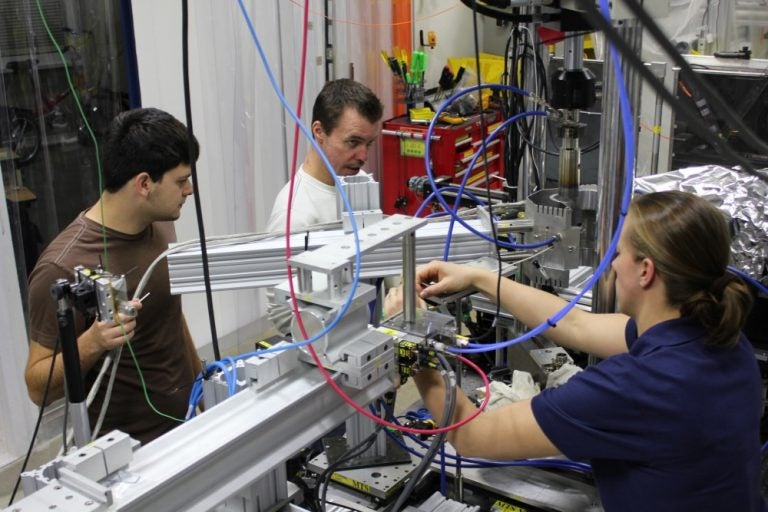A UCF-led research team has succeeded in studying the impact of extreme heat on jet engine turbines in near real-time, which could ultimately help manufacturers better protect against breakdown.
The work, which was published Thursday in Nature Communications, was conducted at the University of Central Florida, the Institute of Materials Research at the German Aerospace Center (DLR) and the Argonne National Laboratory near Chicago with the collaboration ofCleveland State University.
Seetha Raghavan, associate professor of mechanical and aerospace engineering at UCF, conceived of the highly challenging idea of monitoring the very thin layers of super strong coatings used to protect turbine blades as they are exposed to extreme conditions in order to get a clear understanding of how they fail.
Because of the difficulty of monitoring engines in-flight, most manufacturers test blades either after flight or rely on simulated tests to give them the data on how the various coatings on the blades are performing. The prospect of “seeing” the coatings at work in actual conditions was enticing to Raghavan.
She was familiar with the work of Cleveland State University’s Dean of Engineering, Professor Anette Karlsson and DLR Materials Professor Marion Bartsch and she has had a longstanding collaboration with Jonathan Almer and John Okasinski from the Advanced Photon Source at the Argonne National Laboratory. Her idea was to use the expertise at the German facility to develop samples and design a compact furnace capable of mimicking real-world conditions faced by the turbines and then transporting the furnace to the Argonne Center to integrate it for the synchrotron X-Ray portion of the experiment.
“While the idea sounded impossible, we had a team of willing collaborators with complementary skills as well as excellent students who were motivated to take on the challenge,” Raghavan said.
The Argonne particle accelerator would be used to generate the high-energy X-Rays which would be deflected by the atoms in the coating material. By measuring the level of bending or diffraction, the scientists would be able to determine how the coating has been impacted by conditions.
Raghavan, who has been funded by the National Science Foundation for the last three years to study the durability of high temperature coatings, received an additional $52,000 as part of a Catalyzing New International Collaborations award from the agency to support the experiment and international collaboration.
In June 2012, Raghavan and her graduate students Kevin Knipe and Albert Manero travelled to Cologne, Germany where the students spent two months working with the DLR team to design the compact furnace and coat the turbine blade material to develop specimens to be tested. In November, the team reunited outside Chicago at the Argonne laboratory to conduct the synchrotron X-ray studies.
After four days of round-the-clock testing, the team collected a terabyte of raw data, revealing some areas of previously undetectable strain, which are expounded on in the Nature Communications piece.
Raghavan said she hopes the research will be used by turbine manufacturers to verify their testing results, develop new simulation models and ultimately help them better predict any potential failure.
Other participants in the project included Sanna Siddiqui of UCF and Carla Meid and Janine Wischek of DLR. The work was additionally supported by the German Science Foundation and the U.S. Department of Energy.
